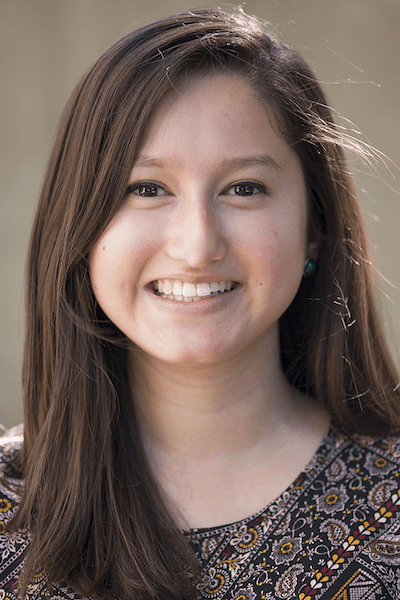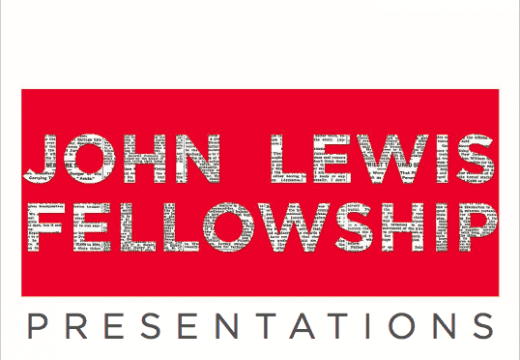Details
Article
My previous work and research has focused on museums and cultural heritage, primarily recognizing their role as an institution to preserve and educate. While I still believe that museums are imperative for cultural preservation, I realize now that I was limiting the role of art and museums. I saw museums as a means to preserve and memorialize something which had already been lost, rather than as tools of activism. I viewed them as more reactionary, versus proactive in dealing with contemporary issues. Furthermore, I remained highly uncritical of museums’ efforts to undo hegemonic narratives in their exhibitions. After the John Lewis Fellowship, I am more cognizant of the proactive nature of museums and their increasing responsibility in activism and solidarity building. I also realize now that as an academic, I have a higher social responsibility both to produce research that challenges Westernized discourses of history and criticize institutions, such as museums, who may still be holding on to antiquated historical narratives.
I was limiting the role of art and museums. I saw museums as a means to preserve and memorialize something which had already been lost, rather than as tools of activism.
It is the role of museum staff and scholars to conduct veracious research and counteract the “white gaze” narrative of history that has dominated academic fields and depict historical figures as evolving and non-stagnant. Since their inception, museums have served as Eurocentric institutions focused on extracting non-Western cultures from their context and displaying them in exoctized manners. Museums have made tremendous strides in decolonizing themselves, but not enough has been done and they continue to ignore the identities of
underrepresented communities. To begin this work, museums should deviate from traditional design techniques and towards more participatory methods. One
problem with traditionalist museums is that they may fall victim to tokenism and produce work that is “oversimplified, reified notions of representativeness, identity, public, and community” (Fouseki 2010, Lynch 2011). Thus, museums are encouraged to lend greater agency to communities. One method is to increase participatory methodology, which provide “opportunities for diverse visitor co-produced experiences” (Simon 2009). One example of participatory methods is the Lunch Counter Simulator at the “Rolls Down like Water: The American Civil Rights Movement” exhibition at the National Center for Civil and Human Rights. While the purpose of the interpretation station is the same, no two individuals will experience is equally.
Although I am not trained, that not does mean that I cannot relate to art and build emotional connections with it.
Even with more participatory methods, museums still suffer from predisposed notions of classism and elitism, which may hinder their efforts of activism and solidarity building. Therefore, scholars, artists, and museums must work together to increase accessibility and break down these notions. As it was mentioned in the fellowship, art can be intimidating because audiences may not know what to look for in aesthetic terms, but that does not mean that audiences are not able to garner meaning in other ways. As a History major, I personally struggle with this because I have not been trained in the traditional sense to analyze art. Although I am not trained, that not does mean that I cannot relate to art and build emotional connections with it. Accessibility can be increased by numerous means, including making the collections relevant to communities and focusing on community outreach.
Museums can only function as agents of activism if the information being disseminated is relevant to the community. The National Center for Civil and Human Rights in Atlanta, Georgia is making strides in diversifying their staff, exhibitions, and outreach. But for museums whose focus is not solely on historically marginalized communities, diversification must be emphasized. It is essential that more exhibitions focus on underrepresented and marginalized people. Not enough exhibitions exist which focus on the Latino, Black, Native American, immigrant, and LGBTQIA experience. When creating exhibitions and outreach, polyvocality is key. Diverse scholars, members of the community, and curators must work collaboratively to produce the most relevant material possible and disseminate it to their targeted audiences through community outreach.
Activism is not just limited to college-aged and older audiences
Community outreach can range from Pre-K programs to programs for older adults. On the university level, museums should focus on interdisciplinary outreach, which creates relevancy among all disciplines. Furthermore, museum staff should be well-equipped to provide necessary materials and resources to scholars looking to enhance their research. The work of scholar-activists can be enhanced by utilizing art in their works. However, activism is not just limited to college-aged and older audiences. As Atlanta based artist Tabia Lisenbee-Parker discussed, she is increasingly interested in activism for children. She works with The Capture Project to provide cameras to children in order for them to document their life and identity building. Numerous museums, such as the Center for Civil and Human Rights, offer programs targeted towards underserved youth and they offer online interpretation material for all ages. At many museums, such as the Nelson-Atkins Museum of Art in Kansas City, MO, programing is available for English language learners, as well as accessibility programs with people with disabilities. Expanding the breadth of museum and exposing more diverse audiences to art produces more engaged and informed potential activists.
Museums and galleries can increase their role in activism by employing local artists and communities. For example, Dr. Maurita Poole (Director, Clark Atlanta University Art Gallery) focused on showcasing local artists from Atlanta to increase community solidarity and involvement. In her vision for the future of the gallery, she hopes to create better cohesion with the University and the gallery, and provide an interactive space for artists and students. This is something that I see lacking, especially among larger, well-endowed museums and galleries in my communities. The lack of emphasis on local art has created great disassociation between the art displayed at the gallery and the communities which are experiencing the art.
Whose responsibility it is to erect these memorials and monuments? Is it my right as an outsider to lead these movements? Do outsiders have the right to tell a community how it should deal transgenerational psychological trauma?
While the John Lewis Fellowship has transformed the way in which I view the role of art and art museums, it has also brought forth challenges. While reading Equal Justice Initiative’s Lynching in America: Confronting the Legacy of Racial Terror, it was stated that no memorials or markers exist to memorialize the victims of lynching in Atlanta. While I believe that it is important to memorialize the victims, I struggle with determining whose responsibility it is to erect these memorials and monuments. Is it my right as an outsider to lead these movements? Do outsiders have the right to tell a community how it should deal transgenerational psychological trauma? After discussing these matters during the Fellowship, I believe that outsiders have the responsibility to form coalitions and allyships and work alongside movements, rather than lead them. A second issue that I found problematic was the balance between art as a means to empower a culture and the commodification of art. As Mika Wiltz explained, she does not believe in “art for art’s sake.” The work that Ramona Big Eagle Moore is doing as a storyteller and as the Oral Historian and Legend Keeper from the Tuscarora Nation is invaluable, but as the President and CEO of Dare to Soar Enterprises, I worry about the commodification aspect of her work. As activists, we must be aware of the “well-intentioned” exhibition or performance, which focuses on issues of marginalized communities without fully considering their agency, participation, and sensitivity.
Moving forward, I hope to continue to be a conscientious scholar, working against Westernized narratives of history, as well as utilizing my knowledge of art and museums to encourage further collaboration between activism and art. I am also increasingly interested in children’s art and activism, and hope to expand on the topic at my job at the Spencer Museum of Art in Lawrence, KS, working with youth and family programming. While it is important that art and museums preserve cultural heritage it is equally as important for them to be active in fostering activism, educating contentious leaders, and disseminating information that is truthful, regardless of whether it goes against the predisposed Eurocentric narratives of history.


